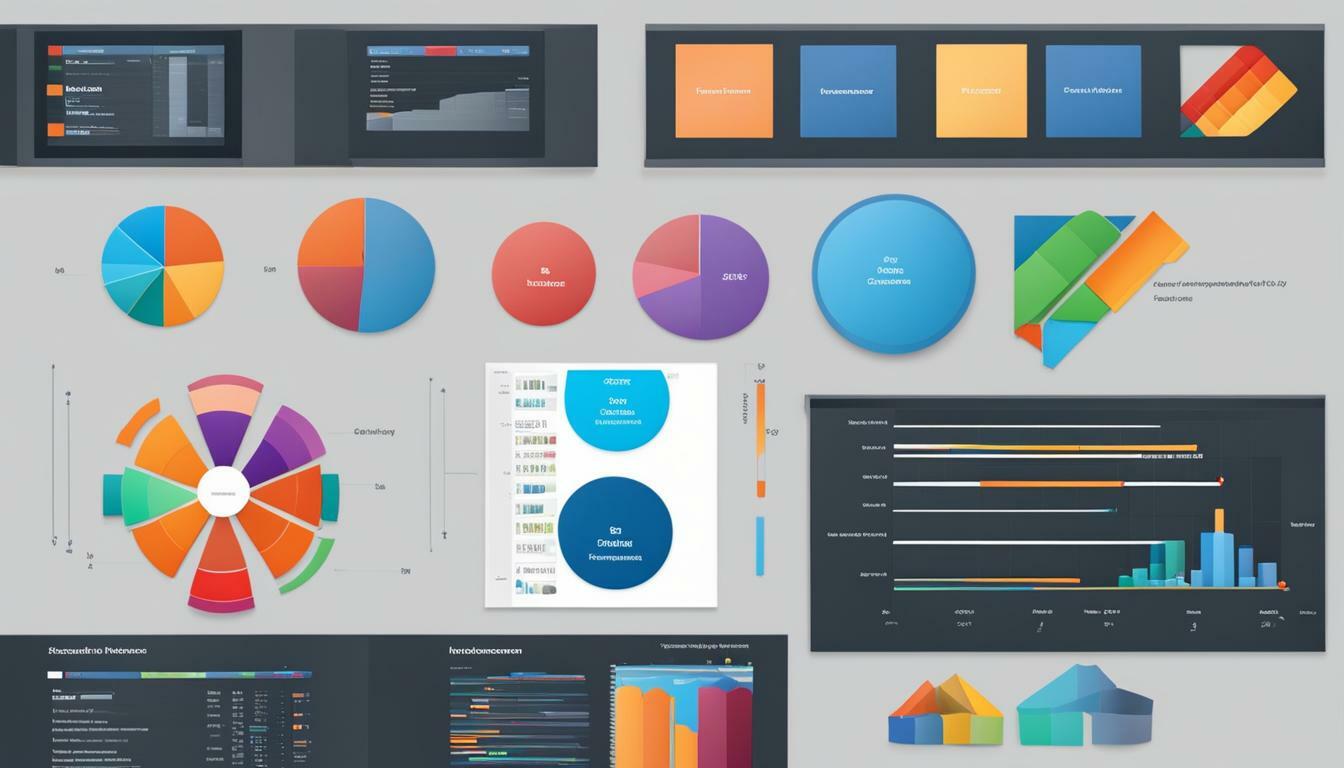Introduction
Welcome, dear reader, to this enlightening exploration on the fascinating realm of web analytics and digital analytics. In a world driven by data and technology, understanding how these two disciplines differ is crucial for any business or individual aiming to thrive in the digital age. So, let’s embark on this insightful journey together!
Definition of Web Analytics and Digital Analytics
Before delving deeper into the intricacies of web and digital analytics, let us first clarify their definitions. Web analytics primarily focuses on analyzing website-specific metrics to gain insights into user behavior, traffic patterns, conversions, and overall performance.
It revolves around understanding how visitors interact with a website and provides valuable information to optimize its effectiveness. Digital analytics, on the other hand, has a broader scope that extends beyond websites.
It encompasses the analysis of various digital channels such as social media platforms, mobile apps, email marketing campaigns – anything that involves online user interactions. Digital analytics aims to integrate data from diverse sources to provide a comprehensive overview of an organization’s online presence.
Importance of Data Analysis in the Digital Age
In today’s digitally driven society where every click and swipe leaves behind a trail of data breadcrumbs, businesses need to harness the power of data analysis more than ever before. Understanding customer behavior has become essential for building effective marketing strategies and delivering personalized experiences.
Data analysis enables businesses to make informed decisions based on evidence rather than intuition alone. By uncovering valuable insights from vast amounts of information collected through web and digital analytics tools, companies can identify trends about their target audience’s preferences, adapt their offerings accordingly,
Moreover, data analysis plays a vital role in measuring marketing campaign performance and return on investment (ROI). By quantifying the impact of different initiatives across various channels or touchpoints along the customer journey, organizations can optimize their marketing efforts and allocate resources more effectively.
Ultimately, data analysis empowers businesses to make data-driven decisions that can propel them ahead of their competitors in this fast-paced digital landscape. So get ready to dive into the contrasting intricacies of web analytics and digital analytics, and unlock the power of data!
Understanding Web Analytics
Focus on website-specific metrics: Web analytics primarily deal with collecting and analyzing data related to a specific website. This involves tracking various metrics to gain insights into website performance, user behavior, and engagement.
By analyzing website-specific data, businesses can identify areas for improvement and make informed decisions to optimize their online presence. Tracking website traffic and user behavior: One of the main objectives of web analytics is to measure website traffic accurately.
This includes monitoring the number of visitors, unique visitors, page views, bounce rate, and session duration. Additionally, web analytics tools allow businesses to delve deeper into user behavior by exploring which pages users visit the most, how they navigate through the site, and where they drop off before converting.
Measuring conversions and goal completions: Web analytics helps businesses track conversions and goal completions on their websites. Whether it’s making a purchase, filling out a contact form, or subscribing to a newsletter – these actions are considered as goals.
Web analytics tools provide insights into conversion rates, funnel visualization (to spot potential bottlenecks), and attribution models that help understand which marketing efforts contribute most effectively to conversions. Tools commonly used in web analytics: The most widely used tool in web analytics is undoubtedly Google Analytics.
Its robust features enable businesses to track various aspects of their websites comprehensively. Google Analytics provides an array of reports like audience demographics, traffic sources analysis (organic search vs.
paid campaigns), content performance metrics (popular pages or blog posts), e-commerce tracking (revenue generated from online sales), among others. Besides Google Analytics, there are numerous other popular web analytics platforms available in the market today offering similar functionalities but with different features tailored for specific industries or advanced analytical needs.
Exploring Digital Analytics
Broader scope beyond websites
Digital analytics takes us beyond the confines of websites and into the vast realm of the digital world. It encompasses various digital channels, including social media platforms, mobile apps, email campaigns, and more.
While web analytics focuses primarily on website-specific metrics, digital analytics widens its lens to capture data from all these different touchpoints. By doing so, it provides a more comprehensive understanding of user behavior and engagement across multiple platforms.
Analyzing data from various digital channels
In digital analytics, we delve into the abundance of data generated by diverse channels. This includes not just traditional websites but also social media platforms like Facebook, Twitter, Instagram, and LinkedIn.
Analysis extends to mobile apps as well – those pocket-sized powerhouses that have become an integral part of our daily lives. By analyzing data from each channel separately and collectively, we gain insights into user preferences and behaviors in different contexts.
Integrating offline and online data sources for a holistic view
A truly holistic view necessitates the integration of offline and online data sources in digital analytics. By blending data from both realms – such as in-store purchases or call center interactions with website visits or social media engagements – businesses gain a deeper understanding of customer behavior across all touchpoints. This integration allows for more accurate attribution modeling and facilitates strategic decision-making based on a comprehensive understanding of customer journeys.
Key metrics in digital analytics
Digital analytics introduces a range of key metrics that extend beyond website-specific measurements found in web analytics. One crucial metric is cross-channel attribution, which involves unraveling how customers interact with multiple touchpoints before converting or completing desired actions. Understanding this journey helps businesses allocate resources effectively across channels to maximize conversions.
Additionally, tracking engagement across multiple platforms becomes essential; it enables businesses to identify which platforms are most effective in capturing and retaining audience attention. These metrics provide valuable insights for optimizing marketing strategies and driving business growth.
In the vast digital landscape, digital analytics goes beyond websites, encompassing various channels such as social media, mobile apps, and email campaigns. It integrates offline and online data sources to provide a holistic view of customer behavior.
Key metrics like cross-channel attribution and engagement tracking help organizations gain a deeper understanding of their audiences and optimize their marketing efforts accordingly. Embracing digital analytics enables businesses to navigate the complexities of the digital world with greater insight and precision.
The Interplay between Web Analytics and Digital Analytics
Overlapping areas of analysis
When it comes to digital marketing, web analytics and digital analytics go hand in hand. They share common ground in terms of the data they analyze, albeit with different scopes. Both disciplines aim to understand user behavior, conversions, and overall performance.
While web analytics focuses on website-specific metrics like traffic sources and goal completions, digital analytics takes a broader approach by considering data from various digital channels such as social media, mobile apps, and offline sources. This overlap allows marketers to gain a comprehensive view of their audience’s journey across multiple touchpoints.
The importance of website data within the larger context of digital marketing efforts
Website data plays a crucial role in understanding how your online presence contributes to your overall digital marketing efforts. Web analytics provides insights into user engagement on specific pages or sections of your website.
By analyzing this data, you can identify areas that require improvement or optimization for better user experience and increased conversions. Understanding how visitors interact with your website is invaluable for tailoring your messaging and optimizing your content strategy across other digital channels.
Utilizing web analytics as a foundation for broader digital strategies
Think of web analytics as the foundation upon which you build broader digital strategies. The granular insights provided by web analytics tools like Google Analytics allow you to make informed decisions about content creation, SEO optimization, targeted advertising campaigns, and more.
By leveraging web analytics data effectively, you can develop comprehensive strategies that encompass not only your website but also other digital touchpoints such as social media platforms or mobile apps. Web analytics serves as the bedrock for optimizing various aspects of your online presence while aligning them with overarching business goals.
While web analytics focuses specifically on analyzing website-specific metrics, it is crucial to recognize its interplay with the broader scope of digital analytics. By understanding the overlapping areas of analysis, acknowledging the importance of website data in the larger context, and utilizing web analytics as a foundation for broader digital strategies, marketers can unlock valuable insights to enhance their overall digital marketing efforts.
Niche Differences: Uncovering Lesser-Known Distinctions
Web Analytics Limitations
Web analytics, while incredibly useful, does come with its fair share of limitations. One such limitation lies in tracking user behavior through third-party cookies.
These tiny snippets of code often used to track users across different websites can be blocked by browsers or privacy-focused add-ons, rendering some data unreliable or incomplete. This makes it crucial for web analysts to seek alternative methods for tracking user journeys and behavior on the web.
Another challenge that web analytics faces is accurately measuring user behavior on mobile devices. With the rise of smartphones and tablets, a significant portion of website traffic now comes from mobile devices.
However, due to the differences in screen sizes and functionalities between desktops and mobiles, accurately capturing user interactions becomes trickier. Analysts need to adapt their strategies by utilizing responsive design and mobile-specific tracking tools to gain comprehensive insights into mobile user behavior.
Digital Analytics Complexities
Digital analytics extends beyond website-centric metrics and delves into the realm of various digital channels. One complexity lies in integrating offline sales data into digital analysis. While online transactions can be easily tracked through e-commerce platforms, analyzing offline purchases presents a unique challenge.
To overcome this hurdle, digital analysts employ techniques like point-of-sale integration or customer surveys to bridge the gap between offline sales and digital analysis. Additionally, analyzing sentiment analysis on social media platforms is another complex task within digital analytics.
Social media has become an integral part of our lives where individuals freely express their opinions about products, brands, or experiences. Extracting meaningful insights from this massive pool of unstructured data requires sophisticated sentiment analysis algorithms that can decipher sentiments hidden within textual content such as tweets or comments accurately.
By recognizing these niche differences in both web analytics limitations and digital analytics complexities, organizations can gain a deeper understanding of their audience’s online behavior from both a website-specific and broader digital perspective. Leveraging the strengths of each discipline will enable businesses to make well-informed decisions, optimize their digital strategies, and stay ahead in this data-driven era.
Conclusion
Summary of key differences between web analytics and digital analytics
Web analytics focuses primarily on analyzing website-specific data, such as tracking website traffic, measuring user behavior, and monitoring conversions and goal completions. It provides valuable insights into the performance of individual websites.
On the other hand, digital analytics takes a broader approach by encompassing data from various digital channels like social media platforms, mobile apps, and offline sources. It goes beyond website analysis to provide a holistic view of the customer journey across multiple touchpoints.
Importance of leveraging both disciplines for comprehensive insights
While web analytics offers valuable information about website performance and user behavior in isolation, it is limited in capturing the full scope of a digital marketing strategy. Digital analytics fills in these gaps by integrating data from multiple channels to provide a more comprehensive understanding of customer engagement across all touchpoints.
By leveraging both disciplines together, businesses can gain deeper insights into their customers’ preferences and behaviors throughout their entire online journey. By combining web analytics with digital analytics, companies can optimize their online presence effectively.
Leveraging both disciplines allows organizations to make informed decisions about website design improvements, content creation strategies, personalized marketing campaigns, and overall digital marketing strategies. This comprehensive approach increases the chances of delivering seamless user experiences that engage customers at every step while driving conversions and business growth.
In this fast-paced digital age where data rules supreme, embracing both web analytics and digital analytics is not just an option but a necessity for businesses wishing to stay competitive in today’s market landscape. So let us embrace these powerful analytical tools and unlock the secrets held within our customers’ online interactions – for through them lies the path to success!



